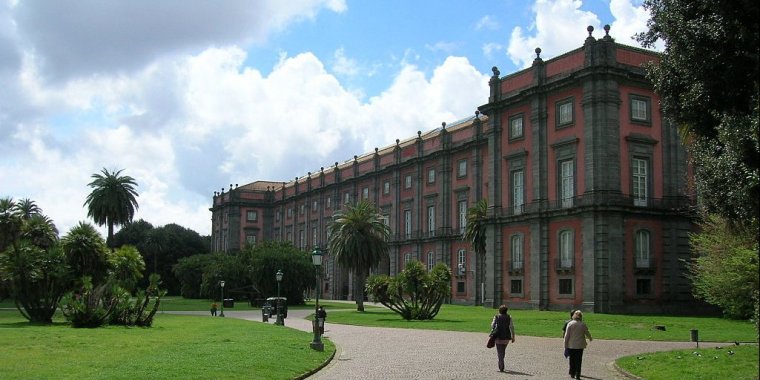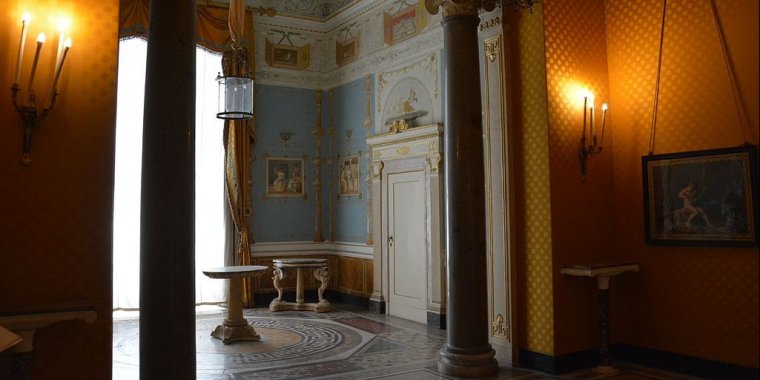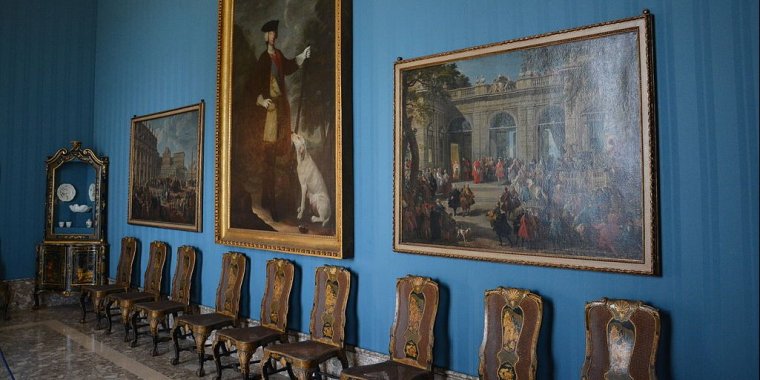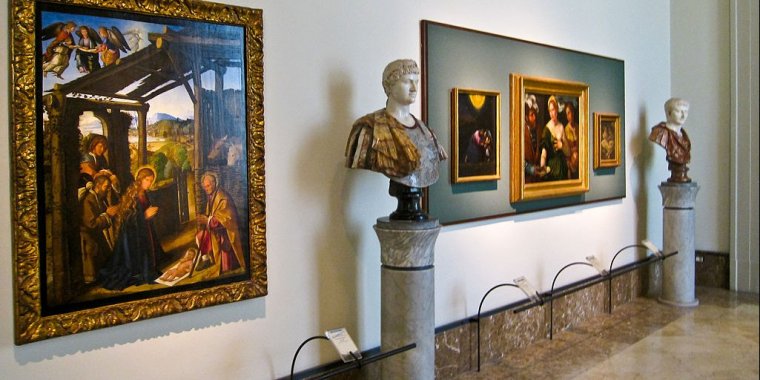| Published in Attractions / Places of Interest |
Palace of Capodimonte, Naples, Italy
The Royal Palace of Capodimonte (Italian Reggia di Capodimonte) is a grand Bourbon palazzo in Naples, Italy, formerly the summer residence and hunting lodge of the kings of the Two Sicilies, and was one of the two Royal Palaces in Napoli. It today houses the National Museum of Capodimonte and art gallery of the city. "Capodimonte" means "top of the hill", and the palace was originally just outside the city, which has now expanded to surround it, and somewhat cooler than the city in summer.
In 1738, Charles VII king of Naples and Sicily (later Charles III, king of Spain) decided to build a hunting lodge on the Capodimonte hill, but then decided that he would instead build a grand palace (a Royal Palace, as in Italian "Reggia" means Royal), partly because his existing residence, the Palace of Portici, was too small to accommodate his court, and partly because he needed somewhere to house the fabulous Farnese art collection which he had inherited from his mother, Elisabetta Farnese, last descendant of the sovereign ducal family of Parma.
He commissioned Angelo Carasale, Giovanni Antonio Medrano and Antonio Canevari to build it. Work started in August 1738, but it was to take more than a century to complete, partly because of the difficulty of transporting piperno, the volcanic rock used, from the quarries in Pianura. In 1758, the first part of the palace was opened and the art collection was brought in.
In 1759, Ferdinand I succeeded his father Charles and the following year he appointed the architect Ferdinando Fuga to oversee work on the palace and the grounds. In 1787, on the advice of Jacob Philipp Hackert, a laboratory for the restoration of paintings was created.
When the Parthenopaean Republic was declared in 1799, Ferdinand fled to Palermo on board Nelson's Vanguard, taking the most valuable items from the palace with him. What remained was looted by the French troops of General Championnet who were billeted there.
During the 10 years of French occupation (1806-1815), the palace was the residence of Joseph Bonaparte and then of Joachim Murat. The art collection was transferred to the Naples National Archaeological Museum. When Ferdinand returned from Sicily in 1815, he employed many painters and sculptors to work on the decoration of the palace.
Francesco I succeeded his father Ferdinand in 1825 and appointed the architect Antonio Niccolini to oversee work on the palace. Niccolini added monumental staircases, and new suites of rooms for the royal family, continuing work when Ferdinand II succeeded Francesco I in 1830. The palace was finally completed in 1840, and a gallery housing contemporary art was added.
With Italian Unification, the royal palace passed in 1861 to the House of Savoy who used it as a residence and also added to the art collections, appointing Domenico Morelli as consultant for new acquisitions. They also added an extensive collection of historic firearms and other weapons. In 1866, the boudoir of Maria Amalia of Saxony was transferred to Capodimonte from the Palace of Portici, and in 1877 a Roman era marble floor was brought in from a Roman villa on Capri.
In the early 20th century, the palace became the residence of the Dukes of Aosta. Then in 1920 it became the property of the Italian state. In 1950 it became a museum with many of the exhibits being returned from the National Museum.
Interior
The first and second floors house the National Gallery (Galleria Nazionale).
Elsewhere in the palace the royal apartments are furnished with antique 18th century furniture and a collection of porcelain and majolica from the various royal residences. The famous Capodimonte Porcelain Factory was just adjacent to the palace; it was started in 1743 by the Bourbon King Charles.
Gardens
The palace is situated in the Bosco di Capodimonte ('Hilltop Wood'), which serves as a royal hunting preserve. There is still a pleasant park around the palace.
Tourist Info
Museum Timetable
• First floor (8.30 am – 7.30 pm)
Farnese Gallery, the Gallery of curiosities, the Gallery of porcelains, the Farnese and Bourbons Armoury and temporary exhibitions on the same floor.
• Second and third floor (9.30 am – 5.00 pm)
(Neapolitan Gallery from the 13th century to Baroque, the contemporary art collection and temporary exhibitions on the same floor)
Closed on Wednesday
Special Evening Openings 6 December 2019 from 7.30 pm until 10.30 pm (the ticket office closes at 9.30 pm – ticket 1 € starting at 19.30)
Address:
via Miano 2 – 80131 Napoli
– from the Highway: take Tangential Route, Capodimonte exit.
Admission:
– 14 euro full price
– 8 euro reduced for visitors aged between 18 and 24 years
– 6 euro sunday special Openings
Free:
– visitors under 18
– artecard holders
Sources
• www.wikipedia.org
• www.museocapodimonte.beniculturali.it
YOU MAY ALSO LIKE




 If you own or manage a travel-related business such as a hotel, a bed-and-breakfast, a restaurant, a pub or a cafeteria, you can create a web page for your business for free on Titi Tudorancea Travel Info. » |





